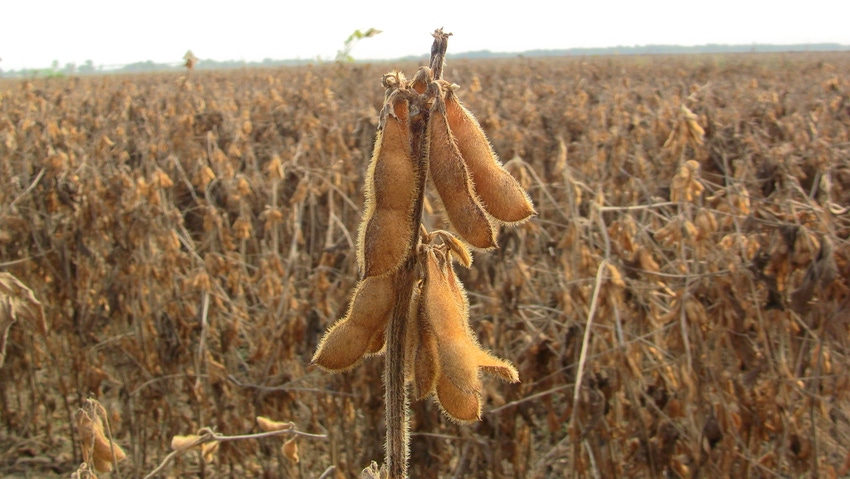June 7, 2018

What do you consider the breakeven price to be for a bushel of soybeans?
This was a question posed to candidates at a Tennessee gubernatorial forum in early May in the heart of soybean country in Northwest Tennessee.
Realistically, there is no correct answer but a range of acceptable answers depending on a farmer’s individual situation. Considering there are farmers in Tennessee and the U.S. that may struggle with answering the question, expecting gubernatorial candidates to be on top of such an answer may be a stretch. Regardless, most acquitted themselves well with their answers and did show they realize the importance of soybeans and agriculture in Tennessee.
What goes into calculating break-even prices? In its basic form, it is dividing costs of production by average or expected production, all on a per acre basis. Sounds simple, but there are multiple moving parts that go into the calculation, and these all vary by individual producer.
What is costs of production?
In calculating break-evens, it includes all costs – variable costs such as seed, fertilizer, herbicides, insecticides, fungicides, fuel, repairs, labor, custom hire, etc.; fixed costs – depreciation and interest on purchased equipment or substitute in equipment payments; and land costs – rental or payments made on owned land. A return to management, family living, or owner’s draw should also be included in the equation to know what is needed to be sustainable. If the operation is having to pay a previous year’s cash shortfall, that should also be in the calculation.
There will be differences between operations among the basic inputs of seed, fertilizer, herbicide, insecticide, fungicide as well as fuel, repairs and labor. Each operation will have a different cost structure based on how and where inputs are purchased. The differences in input costs are really not the differences I get concerned with in calculating breakeven prices or yields.
I see larger differences in equipment and land debt payments and carryover operating loan restructured payments. These are the unique costs a producer has that a university budget cannot account for. Another major difference is family living or owner’s draw. So to calculate a true breakeven at average yields, those numbers should be known. Once known, producers can allocate them to a per acre costs.
The draw?
The simplest method would be to divide the family living or owner’s draw cost by the number of acres. Sometimes that may not give a lower cost crop like soybeans a fair shake compared to a higher cost crop like cotton. If that is the case, then the costs that cannot be fairly allocated on a straight per acre basis might can be allocated based on gross value contribution. For example, if corn is planted on 500 acres and projects to contribute $264,000 gross revenue; soybeans are planted on 1,500 acres and projects to contribute $660,000 gross revenue and cotton is planted on 1,000 acres and is projected to contribute $712,000 gross revenue, then the cost would be allocated 16 percent to corn, 40 percent to soybean acres and 52 percent to cotton. If the cost was $80,000 owner draw, then corn would be charged $25.60 per acre, soybeans would be charged $21.33 per acre and cotton $35.20 per acre. There are other methods of allocation but this is one that can be done fairly easy.
Knowing your breakeven price or breakeven yield can have implications on your marketing plan and overall cropping plan. For instance, if after calculating your variable expenses, land cost, and fixed expenses, the breakeven for a particular crop does not seem achievable, then a change in plans may be needed. Also, if the market is offering above-breakeven prices at average yields, then forward pricing or setting a floor price with options should be considered. Based on average yields, University of Tennessee budget costs that I have adjusted, an assumption of land cost of $150 per acre, and the above allocated owner’s draw, the following breakeven prices can be calculated:
It is also important to calculate breakeven prices under different scenarios. Under the basic assumption, breakeven prices are 75 cents/lb. for cotton, $3.51 bu. for corn, and $9.45 bu. for soybeans. If there is a 10 percent reduction in yields, breakeven prices go up to 83 cents/lb. cotton, $3.90 bu. corn, and $10.50 bu. soybeans. Other scenarios might also include higher variable costs so the breakeven equation could change as we go through the production year depending on an individual producer’s situation.
Above breakeven
Prices currently are above breakeven for the basic assumptions and are at breakeven or close for the 10 percent yield reduction scenario. If producers can lock in their main input cost and their overall cost are above breakeven at average yields, then as a sound business practice they should lock in prices or set a floor price on at least a portion of the crop. This is particularly true if crop insurance is used as a production risk management tool. In that case, the crop insurance is acting as a backstop on production for any pricing contracts.
Each individual producer or operation has a different breakeven price based on their own cost structure and yields. The above examples use cost associated with each crop plus an allocated owner’s draw. A true breakeven needed to cover all costs should consider any additional costs or amortized payments such as carryover operating debt. Some expenses might could be offset by any additional income. Farm bill payments might could be used, but since they are difficult to estimate, a conservative amount should be considered if at all.
Contact your local Extension office or area specialist – Farm Management for assistance on developing your breakeven prices needed or in Tennessee call the MANAGEment Information Line at 1-800-345-0561. The University of Tennessee Crop Budgets can be accessed on line at http://economics.ag.utk.edu/budgets.html .
About the Author(s)
You May Also Like






